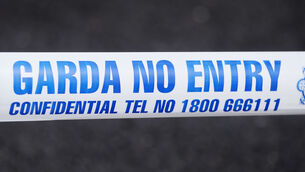Investigation into aborted take-off at Cork Airport finds pre-flight checks did not identify issue

A US aviation giant has been advised to review the design of a steering pin mechanism on the nose wheel of a popular business jet following an investigation into an aborted take-off at Cork Airport last year.
The Air Accident Investigation Unit (AAIU) has also advised Textron Aviation to review the operational procedures on the Cessna Citation 750-series to increase the probability of pilots spotting the disconnected pins during their pre-flight checks.
The safety recommendations are contained in the report into an incident at Cork Airport last July involving a 12-seater Cessna 750 Citation X+ jet, owned, operated and maintained by Textron.
It found the probable cause was that pre-flight checks did not identify that the ‘torque link assembly’ - which can be disconnected to allow the aircraft to be towed on the ground - was disconnected for take-off.
On July 22 last, the pilots of a Cessna 750 Citation X+, with six passengers on board, bound for Gander, Newfoundland, were speeding down Cork Airport's runway 16 when they noticed a significant vibration from the nose wheel.
They aborted take-off at 67-knots and the aircraft came to a halt on the runway. The passengers and crew disembarked, uninjured.
The aircraft sustained substantial damage to its nose wheel and its nose.
The AAIU investigation established that as the aircraft taxied towards the runway, the pilot-in-command experienced some difficulties in turning the nose wheel and discussed his concerns with the second-in-command who confirmed that the relevant pre-flight inspection of the nose gear had been completed.
But as the aircraft gathered speed down the runway, they noticed significant vibration of the nose wheel and aborted take-off.
The AAIU report found that: “In this occurrence, the pilots were able to maintain control of the aircraft and bring it to rest safely with no injuries to passengers or crew.
However, the aircraft sustained substantial damage at a relatively low speed, and under different circumstances, the outcome could have been much more serious.”
The AAIU identified several contributory factors to the incident including the absence of a visual warning on the torque link assembly to draw a pilot’s attention to an incorrectly installed torque link release pin; the absence of a design feature on the assembly to prevent the incorrect installation of the torque link release pin; and the merging of pre-flight checks on the assembly mechanism with the checks for wheels and ‘tyres'.
The AAIU found five previous incidents relating to the nose gear steering pin mechanism - all on Cessna Citation C560XL aircraft, which has a similar pin link arrangement to the aircraft in the Cork Airport incident.
“A common theme in these five events was an incorrectly installed torque link release pin or disconnected torque link which was not detected during pre-flight checks,” the report found.












